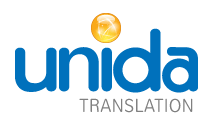Translating content from one language to another sounds simple enough; just take the words, convert them, and move on. But anyone who’s been through the process knows it’s rarely that straightforward. Small mistakes can completely change the meaning of a sentence, offend your audience, or cause confusion that’s tough to fix later. Whether you’re translating marketing copy, legal documents, or a simple email, paying attention to the details makes all the difference.
Relying Too Heavily on Machine Translation
It’s tempting. You’ve got a deadline. You drop your text into a free translation tool, and a different language version appears in seconds. But machine translations are still just that: machine-generated. They misinterpret context, miss cultural cues, and produce awkward phrasing.
Instead, use machine translation only as a rough draft, if at all. Have a fluent speaker review or rework the content. If the text is going to be published, sent to clients, or used for anything important, always have it checked — or better yet, rewritten — by someone who knows both languages well.
Word-for-Word Translation
Languages don’t line up perfectly. A phrase that makes sense in English might sound bizarre in French, Spanish, or Japanese. Literal, word-for-word translation often strips sentences of their intended meaning and creates confusing results.
For example, idioms, jokes, and cultural references often get lost in translation. A phrase like “hit the ground running” might confuse someone who doesn’t recognize it as a metaphor. Instead of translating each word individually, focus on the meaning behind the phrase and express that idea naturally in the target language.
Ignoring Cultural Context
Words are just part of communication. Tone, formality, and cultural sensitivity affect how a message is received. What sounds casual and friendly in one language could be seen as rude or too familiar in another. Or worse, some symbols, phrases, or colors might have different meanings depending on the region.
Always research your target audience. Are you writing for a business audience or consumers? Is the culture more formal or relaxed? Do specific topics need to be approached with extra care? The more you know about your audience’s background, the better your translation will resonate.
Skipping Proofreading
Translation is just like writing; you need to review and revise it. Mistakes happen. Typos slip through. Awkward sentences sometimes get missed. And when translating from another language, it’s easy to use the wrong verb tense or sentence structure accidentally.
Have someone other than the translator review the final text, ideally a native speaker. They’ll be more likely to catch errors that others might overlook and can ensure the message flows smoothly and naturally.
Using the Wrong Tone or Register
Tone matters. A casual, upbeat tone might work well for social media, but it’s probably inappropriate for a legal document or formal report. Some languages have different pronouns or verb forms for speaking with friends, strangers, or people in positions of authority. Using the wrong level of formality can make your message feel off or even offensive.
Always match the tone of your translation to the context. Ask yourself: Who is this message for? What kind of relationship do I want to build with the reader? Should it sound warm and conversational or polished and professional?
Overcomplicating the Language
Translators sometimes feel pressured to sound “clever” or overly academic. But simple, clear language often works better. Overcomplicating things can lead to clunky sentences and confusion, especially if the original text was straightforward.
Aim for clarity. Use natural phrasing. Don’t try to mirror the source text word for word. Instead, focus on what feels natural and readable in the target language.
Forgetting About Regional Differences
Spanish spoken in Spain isn’t exactly the same as Spanish spoken in Mexico. The same goes for Portuguese in Brazil versus Portugal or English in the UK versus the US. Words, spellings, and even meanings can vary from one region to another.
Make sure your translation fits the region you’re targeting. If you’re launching a product in Mexico, don’t use European Spanish. If you’re publishing content for Canadians, double-check spellings, measurements, and cultural references. It’s the little things that show you understand your audience.
Translating Names and Brands Incorrectly
Some things shouldn’t be translated. Product names, company names, and certain brand terms often need to stay in the original language to maintain consistency and recognition. At the same time, some names may need slight adjustments to avoid sounding strange or offensive in another language.
Always research how names and brands should appear in the target language. In some cases, a localized version of a name works best. In others, it’s smarter to leave it untouched. A translator with branding experience can help guide this decision.
Skipping Professional Help
Translation might not seem like a big deal until something goes wrong. A poorly translated document can damage your reputation, confuse your audience, or lead to legal trouble. And fixing a bad translation takes time and often costs more than doing it right from the start.
If the text matters, don’t take chances. Bring in someone who understands both the language and the context. It’s an investment that pays off in clarity, credibility, and peace of mind.
Let Unida Translation Help You
Translation is more than just swapping out words. It’s about ensuring your message lands how you want it to. Take the time to do it right. At Unida Translation, we offer much more than language conversion. Our team of certified translators and interpreters is committed to delivering accurate and culturally sensitive language solutions to meet the diverse needs of our clients. Whether you need document translation or interpretation, in person or remotely, we’re here to make communication seamless in over 125 languages. Working on a project with no room for error? Let’s talk.

